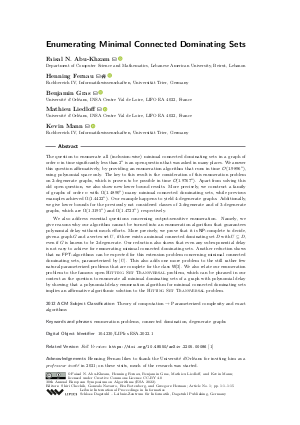LIPIcs.ESA.2022.1.pdf
- Filesize: 0.83 MB
- 15 pages

 Creative Commons Attribution 4.0 International license
Creative Commons Attribution 4.0 International license
































Feedback for Dagstuhl Publishing